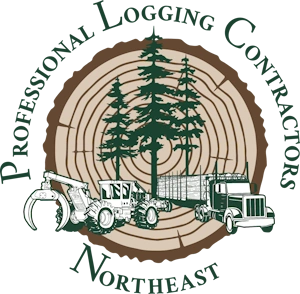As We See It: Knowing When to Say No
If you are still in the logging business today, you have probably become very adept about calculating the cost of doing business. With the rising price of equipment and parts; consumables such as fuel, tires and lubricants; not to mention higher labor costs and costs associated with regulation of the industry, you have to be on top of your game, knowing just what your fixed costs are and also have a good idea of your variable costs.
For years, the leadership of our industry has stressed the importance of knowing what it costs to produce a unit of fiber. There have been numerous studies completed by Universities and organizations such as the Wood Supply Research  Institute that help to determine some of the inefficiencies in the wood supply chain and thoughts on how best to reduce cost in our operating environment. While models have been developed to calculate what it “should” cost to produce a volume of fiber, they oftentimes leave out the many variables such as topography, quality of timber, regeneration harvest vs. thinning, tract size and other expectations that a consulting forester or landowner expect well after the ink is dry on a contract. Other variables that influence the cost of production include DOT inspections, turn- around time at the mill, breakdowns, labor shortages and weather, to name a few.
Institute that help to determine some of the inefficiencies in the wood supply chain and thoughts on how best to reduce cost in our operating environment. While models have been developed to calculate what it “should” cost to produce a volume of fiber, they oftentimes leave out the many variables such as topography, quality of timber, regeneration harvest vs. thinning, tract size and other expectations that a consulting forester or landowner expect well after the ink is dry on a contract. Other variables that influence the cost of production include DOT inspections, turn- around time at the mill, breakdowns, labor shortages and weather, to name a few.
There continue to be meetings across the country that look at the entire wood supply chain and discussions that include the need for a cultural change in the way that business is conducted from the stump to the mill. Meetings and discussions are only as good as the follow-up and on-the-ground practices that occur as a result.
The old business model that has existed over the past 100+ years between loggers and their customers, the landowners and the consuming mills is no longer working. What has been missing from this model is the logger knowing when to say NO; NO to the landowner if they expect a higher price for their stumpage that would make you unprofitable or expectations of services that were not included in the contract; NO to the mill if the delivered rate is less than you can afford to pay a reasonable stumpage rate and charge a reasonable rate for the services that you will be providing. When there is not enough money left to make a reasonable profit for the business that you are depending on to afford a decent living and provide a retirement for you and your family, it is time to say NO.
You have equipped yourself with the tools and knowledge that you need to make these decisions over the past several years as your business has gained efficiencies both on-the-ground and through better management. Now you must use them. Perhaps it is time that logger training include negotiation skills for loggers. Would you attend?
While there are many variables that impact profitability and success in this industry, oftentimes loggers can be their own worst adversaries. Until we view ourselves in a better light and learn the business ropes better, including negotiation, can we really expect to do any better?
As we have all heard repeatedly, “There are three legs to the supply chain, and all need to be strong.” Opportunities are coming back for the professional timber harvester as markets improve across the country. Let’s not blow it by selling ourselves short. Know when to say NO, and realize an opportunity where one exists. As upbeat 2013 quarterly reports from some of the major forest products corporations begin to trickle in, a quote from a good colleague simply states, “We don’t mind sharing some of the pain in the down cycles, but it would be great if we could also share some of the gains in the up cycles.”
The American Loggers Council is a non-profit 501(c)(6) corporation representing professional timber harvesters in 30 states across the US. For more information, visit their web site at www.americanloggers.org or contact their office at 409-625-0206.

